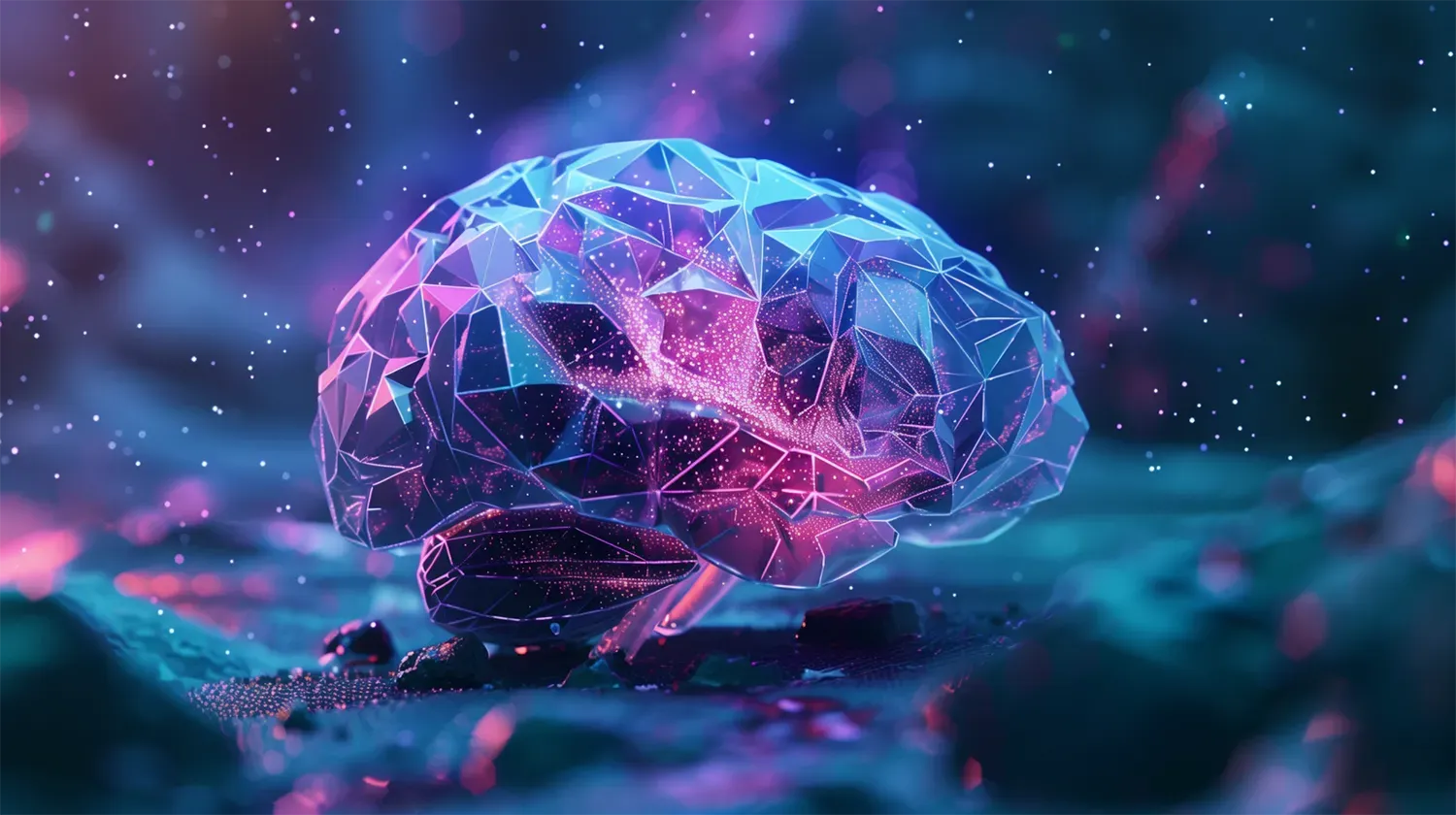What is Organoid Intelligence and How Will It Change the Future

In the world of scientific innovation, a convergence of biology and technology has given rise to a captivating concept — organoid intelligence. This revolutionary fusion entails the methodical transformation of stem cells into complex organ-like structures referred to as organoids. These intricately designed organoids faithfully replicate the functions of actual organs, heralding a new era of possibilities.
While organoids as a whole hold immense potential for medical breakthroughs, the spotlight here is on their role in the domain of organoid intelligence — a domain poised to challenge the supremacy of artificial intelligence.
Let’s dive into the origins and implications of organoid intelligence, highlighting its role in accelerating research, enhancing education, and fostering interdisciplinary collaboration.
TL;DR
Organoids are stem cell-derived versions of organs that can mimic real organ functions. Organoids are tiny, artificially created versions of organs that are grown from stem cells. Scientists can use organoids to study diseases, test drugs, and model organs like the brain, liver, and kidneys.
Organoid "brains" can even show neuron activity and form connections, displaying early signs of intelligence. This has led to the concept of "organoid intelligence" - organoids potentially being integrated with AI to create more human-like artificial intelligence.
Key highlights of organoid intelligence include:
- Organoids can accelerate research and drug testing as human-relevant disease models.
- Integrating organoids with AI may enable more human-like artificial intelligence.
- While promising, organoids raise ethical issues like attributing consciousness and rights.
A Comprehensive Look at Organoids
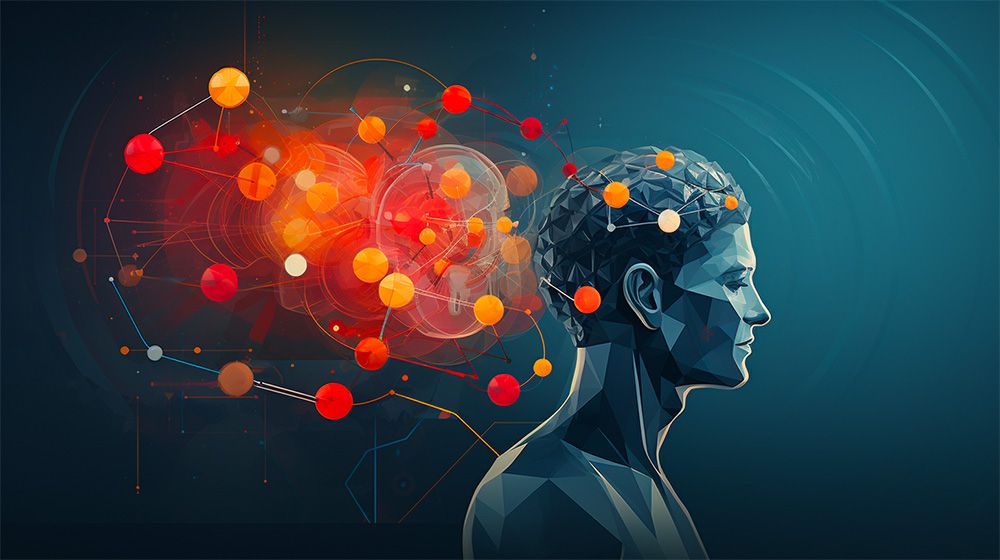
At the intersection of biology and technology lies the captivating phenomenon of organoids, intricately crafted miniature structures that mirror the functions and behaviours of actual organs. These remarkable creations are nurtured from stem cells, the malleable building blocks of life, through a process known as organoid culture. Stem cells, possessing the remarkable ability to differentiate into various cell types, are coaxed into forming intricate three-dimensional structures that mimic the complexity of organs like the brain, liver, and even the intestine.
The process of cultivating organoids involves a delicate dance of precise conditions and nurturing environments. Researchers provide stem cells with specific growth factors, signalling molecules, and nutrients, coaxing them to self-organise and differentiate into the diverse cell types found in real organs. This process is similar to nature's own symphony, as cells organise themselves into complex architectures, exhibiting functionalities akin to those of actual organs. The result is a stunning blend of biological ingenuity and technological precision, a harmonious convergence that has paved the way for unprecedented advancements.
Organoids have swiftly transitioned from experimental curiosities to groundbreaking tools that drive cutting-edge research. One particularly illuminating example can be found in the realm of neurology. Organoids derived from neural stem cells have illuminated previously obscured facets of brain development and neurological disorders. Researchers have watched in wonder as these miniature brains exhibit neural activity, enabling the study of conditions like autism, schizophrenia, and Alzheimer's disease in ways previously thought impossible.
Organoids have greatly contributed to the medical community's search for new disease models. For instance, kidney organoids have shed light on the mechanisms underlying kidney diseases, offering platforms for drug testing and personalised medicine. Similarly, researchers have cultivated liver organoids that mimic the behaviour of a human liver, providing insights into liver diseases and drug toxicity screening. These advancements mark a crucial step towards more efficient and ethically sound research methodologies.
The significance of organoids transcends research alone; they extend their influence to drug development and testing. Traditional drug testing on animals often fails to accurately predict human responses. Organoids offer a compelling alternative, allowing scientists to test new drugs on human-like tissues without the ethical concerns associated with animal testing. This precision-driven approach accelerates drug discovery processes and has the potential to reshape pharmaceutical research strategies.
The advent of organoids has kindled the promise of personalised medicine, a future where medical treatments are tailored to an individual's genetic makeup and specific organ responses. With the ability to create patient-specific organoids, researchers can simulate disease conditions unique to a patient and test a variety of treatments, thus optimising therapeutic approaches for improved patient outcomes.
Exploring the Potential of Organoids
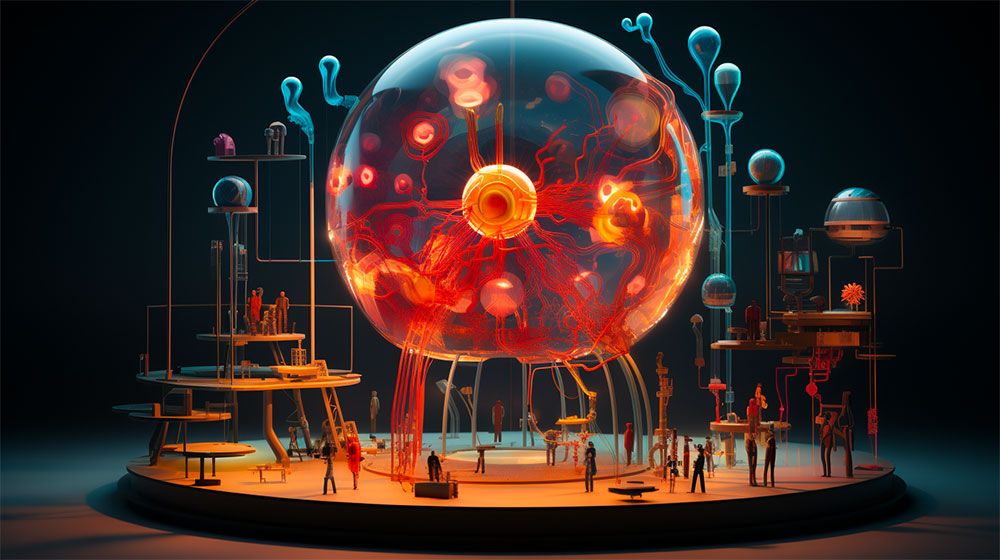
The journey of organoids from their humble beginnings as clusters of stem cells to their role as beacons of intelligent behaviour has been nothing short of astonishing. In the field of neuroscience, for instance, brain organoids have stunned researchers by generating synchronised electrical activity reminiscent of neural oscillations found in living brains.
Organoids are also making their mark in the arena of cognition. In 2017, a group of researchers at Harvard Medical School managed to coax brain organoids into producing functional synapses, the microscopic junctions that enable communication between neurons. This achievement marked a significant leap forward in understanding how these structures can process and transmit information.
These intriguing and spontaneous bursts of communication within the organoid's cellular network provide a glimpse into the foundation of learning and memory processes. At the heart of this paradigm shift, scientists are pursuing a groundbreaking project: linking organoids with AI systems to create a novel form of intelligence.
Imagine a computer built not from traditional circuitry but from brain organoids that mirror the functions of real neural tissue. These miniature, self-organising brain-like structures hold the potential to process information in a manner analogous to human brains, albeit on a smaller scale. This convergence of organoids and AI marks a new frontier where the lines between natural and artificial intelligence begin to blur.
As we progress, we will uncover how this intricate dance of signals within organoids intersects with artificial intelligence, inviting researchers to combine these natural wonders with AI systems. The observation of intelligent behaviours in organoids not only challenges our understanding of cognition but also ignites the potential for unprecedented breakthroughs in neuroscience and artificial intelligence. These miniature entities provide a unique vantage point from which to study the fundamentals of learning, memory, and decision-making. We get a little bit closer to understanding the intricate workings of the human mind and its synthetic equivalents as we develop our understanding of these processes.
Connecting Organoids for System-Level Interactions

While the exploration of individual organoids has showcased their potential to replicate specific organ functions, the horizon of organoid intelligence extends even further when these miniature structures are interconnected, giving rise to a new level of complexity. This transition from individuality to networked systems holds the key to uncovering emergent behaviours that materialise when organoids interact, opening avenues for understanding intelligence at a system level.
Linking organoids together represents a fascinating blend of science fiction and tangible reality. Scientists can simulate complex interactions that mimic the dynamics of organs within living organisms by connecting these entities. For instance, the fusion of heart organoids with vascular counterparts results in a network that mirrors blood circulation and can even replicate responses to pharmaceutical compounds.
The true marvel emerges when interconnected organoids exhibit behaviours that arise from their collective interactions. A prime example comes from Caltech, where researchers succeeded in connecting brain and gut organoids, witnessing neural activity across the network. This phenomenon hints at the potential for investigating the intricate gut-brain axis, a regulatory network governing digestion, mood, and cognitive functions.
While the promise of interconnected organoids is exhilarating, challenges loom on the horizon. The complexity of establishing and maintaining these connections, ensuring they authentically mirror the intricate nature of natural organ systems, demands careful engineering.
Moreover, as we gaze further into the future at the intelligent behaviours exhibited by organoids, we are met with a myriad of new challenges. These miniature structures, though remarkable, are far from fully replicating the intricacies of the human brain. The evolution of organoid intelligence is an ongoing endeavour that requires meticulous research and ethical considerations to ensure that these structures are cultivated and studied responsibly.
In spite of the challenges, the potential rewards are immense. The creation of links between organoids holds the promise of unravelling mysteries related to cross-organ communication, comprehending complex diseases spanning multiple systems, and deciphering the mechanisms behind the emergence of intelligent behaviours from interconnected interactions. This frontier beckons us towards a new phase of exploration, one where collective intelligence isn't merely observed but actively crafted and analysed.
At the juncture of individual organoids and interconnected networks, we find ourselves on the brink of reshaping our comprehension of life's intricate interplay. This journey is a testimony to human innovation and an entryway to uncovering the enigmas of biological systems and their inherent intelligence. Beyond its biological applications, the study of organoid networks spills over into other realms, potentially guiding the evolution of advanced artificial intelligence, revolutionary medical treatments, and a deeper appreciation for the choreography of life's interconnected mechanisms.
In the field of interconnected organoids, we grasp the tools to explore the vibrant symphony of existence at an unprecedented depth. As we step into this chapter of exploration, we venture into the heart of biological intricacies and rewrite the script of intelligence itself, from the brilliance of solitary units to the wisdom that emerges through harmonious connections.
Organoid-Based Disease Modeling and Drug Discovery
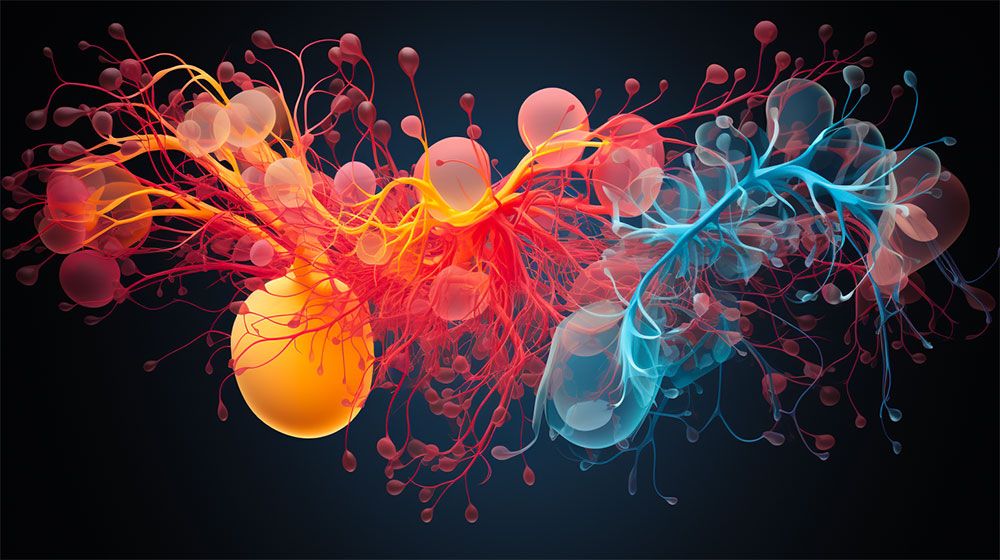
As a tool for modelling illnesses, organoids offer an outstanding advantage that traditional methods struggle to replicate. Unlike animal models, which often fail to accurately mimic human disease dynamics, organoids derived from human cells mirror the intricacies of human biology far more faithfully. Organoids address this disparity by serving as human-centric testing platforms, minimising the need for animal experimentation. Researchers can now assess drug efficacy and toxicity directly on human-derived tissues, bypassing ethical concerns and shortening the drug development timeline.
Take, for example, the case of cystic fibrosis. Organoids cultured from patients' own cells have provided insights into the genetic mutations causing the disease, allowing scientists to screen potential drug candidates more efficiently.
The allure of organoid-based disease modelling lies not only in its accuracy but also in its potential for personalised medicine. Organoids derived from a patient's cells harbour the individual's genetic signature, allowing researchers to test various drug treatments on a tailored basis. This approach accelerates drug discovery and reduces the risk of adverse reactions and side effects that often arise from less personalised treatment strategies.
Consider the strides made in the fight against cancer. Researchers at the Hubrecht Institute in the Netherlands have managed to grow patient-specific organoids from tumours. These "tumoroids" allow scientists to screen a variety of drugs to identify the most effective treatment for an individual patient. This tailored approach optimises patient care and slashes the time and resources required to find suitable therapies.
The Fusion of Organoid Intelligence and AI in Reshaping Digital Frontiers
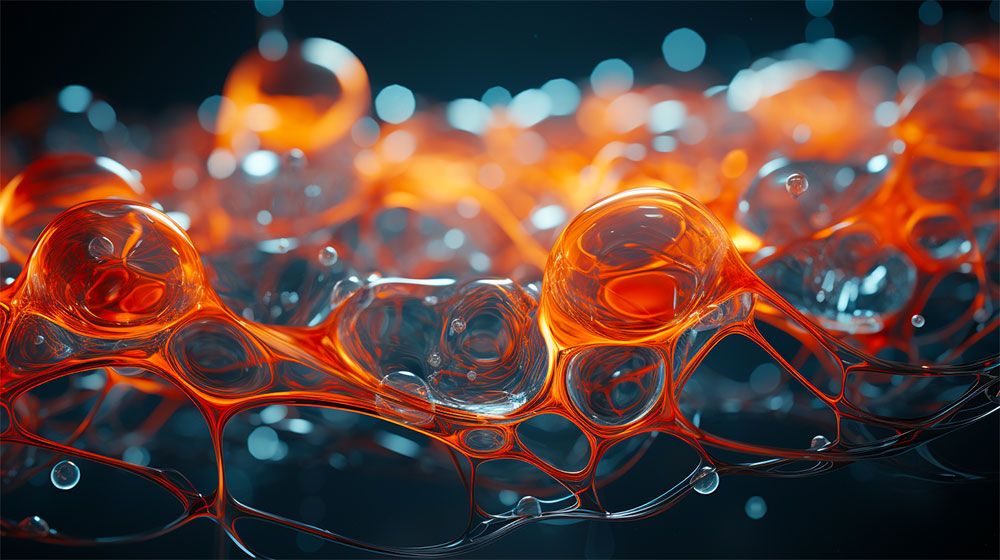
As the digital landscape evolves, traditional approaches to AI encounter limitations in replicating the complexity of human cognition. Organoid intelligence introduces a novel avenue, where the intricate interactions within living neural-like structures spark fresh perspectives on how intelligence can be harnessed and enhanced.
Intertwining the realms of organoid intelligence and cutting-edge medical advancements, the fusion of biological organoids and artificial intelligence opens doors to unprecedented possibilities. Notably, the synergistic potential of organoids and AI extends beyond reshaping disease modelling and drug discovery, reaching into the very fabric of intelligence enhancement.
While traditional AI algorithms excel in processing vast amounts of data, the integration of organoids introduces an element of organic adaptability. These miniaturised brain-like structures possess the capacity to learn, adapt, and evolve in response to stimuli. We can bridge the gap between machine learning and the delicate nuances of human-like cognition by integrating these organic networks with AI. This leap has the potential to foster not only more efficient problem-solving but also the emergence of AI systems that are more attuned to contextual nuances and dynamic environments.
It is possible that organoids and artificial intelligence could redefine our understanding of memory and learning processes in the future. The spontaneous bursts of communication observed within organoids' cellular networks take on new significance when integrated with AI algorithms. This hybrid network could potentially mimic cognitive functions, laying the groundwork for novel approaches to AI development.
Imagine a computer system built using brain organoids. These organoids, cultivated from stem cells, offer a bridge between biological and artificial neural networks. The outcome could revolutionise the field of artificial intelligence. These miniature brain-like structures, with their inherent capacity for processing information, may be the key to unlocking new AI paradigms that are more human-like and possess the potential for unique cognitive capabilities.
Yet, this intriguing synergy also raises ethical considerations. As we blur the lines between artificial and organic, questions emerge about the boundaries of consciousness, autonomy, and moral responsibilities. Although organoids exhibit signs of intelligence, they are far from sentient beings. The line between simulated intelligence and genuine cognition remains a boundary that must be carefully navigated. The implications of this convergence extend beyond technological prowess, beckoning us to reflect on what it means to create entities that share aspects of biological intelligence.
As we explore the uncharted territory of organoid intelligence and AI, it is clear that the implications go far beyond medical research. This convergence has the potential to reshape industries, revolutionise AI technology, and redefine the limits of human-made intelligence.
Potential Benefits of Organoid Intelligence
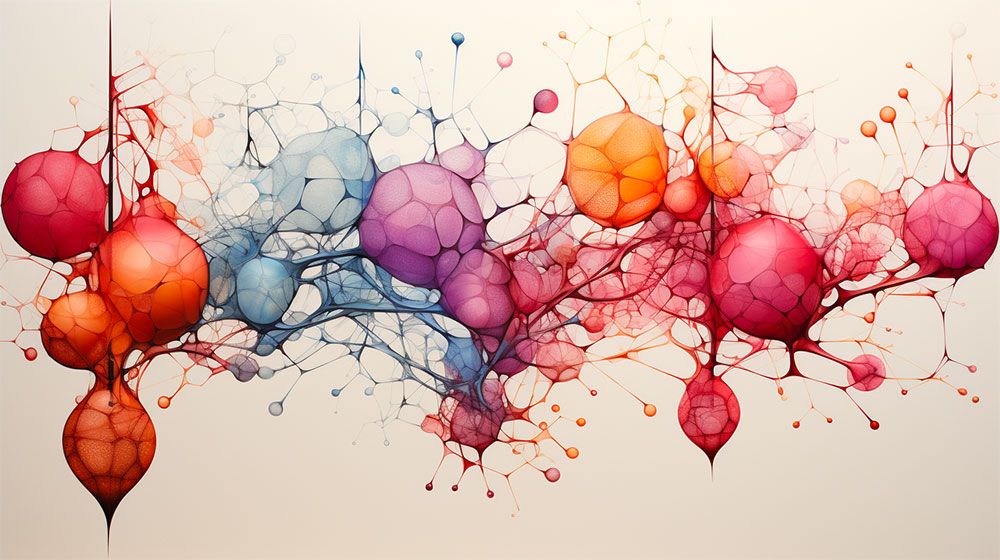
Research institutions, pharmaceutical companies, and even industries beyond healthcare can benefit from incorporating organoid intelligence into their operations. From reshaping drug discovery to influencing technological progress and ethical considerations, the transformative impact of organoid intelligence is poised to reach far and wide.
Organoid intelligence emerges as a pivotal force for institutions and industries seeking breakthrough innovations. Here are a few examples:
Faster and More Cost-Effective Research
Organoid intelligence enables high-throughput screening of potential drugs and therapies. This involves testing a large number of compounds on organoids in a relatively short time. This process accelerates the identification of promising candidates for further investigation, reducing the time it takes to move from drug discovery to clinical trials. Traditional drug development often involves testing compounds on animals, which can be time-consuming, expensive, and may not accurately predict human responses. Organoids may provide a more human-relevant model for drug testing, leading to more accurate predictions and significant time and cost savings.
Education and Training
Medical students, researchers, and healthcare professionals can use organoids as interactive learning tools to study complex organ functions, disease processes, and medical interventions. The tangible and three-dimensional nature of organoids enhances understanding compared to traditional textbooks or two-dimensional images. This technology can bridge the gap between theoretical knowledge and practical experience, fostering a deeper understanding of medical concepts and improving clinical skills.
Biotechnology and Innovation
Embracing organoid intelligence opens up a range of opportunities for biotechnology companies to innovate in organoid creation, analysis, and manipulation. Companies can develop new methods for creating specialised organoids that closely mimic specific human conditions or diseases. Innovative tools and technologies can be designed to enhance the efficiency of organoid culture and analysis. This can lead to the creation of new products and services for both research and clinical applications, driving advancements in the biotechnology industry.
Data Analysis and AI Integration
Integrating organoid technology with advanced data analysis techniques and AI can uncover complex patterns and insights that might be difficult to discern through traditional methods. AI algorithms can analyse large datasets generated from organoid experiments, identifying subtle changes, correlations, and trends. This can provide researchers with a deeper understanding of disease mechanisms, drug interactions, and potential treatment strategies. AI-driven approaches can also help optimise experimental protocols and enhance the reproducibility of results.
Collaboration and Interdisciplinary Research
Organoid intelligence encourages collaboration between researchers from diverse fields, such as biology, bioengineering, computer science, and data analysis. This interdisciplinary approach can lead to groundbreaking discoveries and innovative solutions that wouldn't be possible within a single discipline. Biologists can work with bioengineers to design more sophisticated organoid models, while data analysts and computer scientists can develop AI algorithms to extract meaningful insights from complex organoid datasets. Such collaborations foster a holistic approach to research and problem-solving.
Reducing Energy Needs Through Organoid Intelligence
A significant challenge in AI development is the immense energy consumption required for training deep learning models. Traditional AI training processes are power-hungry and contribute to environmental concerns. Here, organoid intelligence offers a glimmer of hope.
With its astonishing energy efficiency, the brain operates as a pinnacle of optimisation. Researchers may develop methods to lessen the energy footprint of AI training by examining the energy-efficient principles of organoids. Insights gained from organoid intelligence might lead to the creation of more streamlined algorithms, optimised hardware architectures, and novel training paradigms that emulate the brain's efficiency. This, in turn, could pave the way for sustainable and environmentally conscious AI development.
Achieving Organoid Intelligence
Realising organoid intelligence requires a strategic convergence of biological expertise and technological ingenuity. This process unfolds through distinct stages:
1. Organoid Cultivation: Stem cells are guided to differentiate into organoids resembling real organs, each harbouring specific functions.
2. Neural Network Formation: Neural organoids are cultivated to replicate brain-like neural networks with spontaneous electrical activity.
3. AI Interface: Organoids' signals interface with AI algorithms, forming the bridge between biological and artificial components.
4. Learning and Adaptation: AI systems learn from organoid signals, adapting responses akin to synaptic plasticity in human brains.
5. Cognitive Integration: Over time, the AI gains information-processing, decision-making, and potentially memory capabilities, powered by the neural network's dynamics.
Despite challenges, including network stability and ethical considerations, this journey holds transformative potential. From enhancing AI technology to understanding human cognition, the fusion of organoid intelligence emerges as a gateway to groundbreaking possibilities.
Ethical Approach and Speculative Future Advances
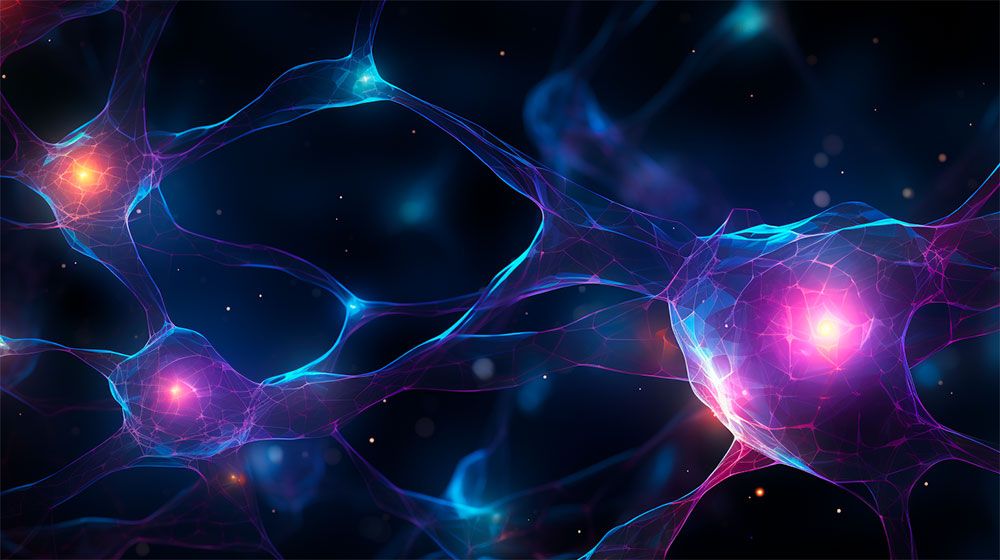
At the crossroads of organoid intelligence, disease modelling, and interconnected networks, the trajectory of progress is poised to venture into speculative territories.
Among the speculations is whether brain organoids could develop rudimentary consciousness through intricate neural interactions. Researchers at Yale University identified patterns in lab-grown brain organoids resembling activity seen in preterm infants. While genuine self-awareness is distant, the concept highlights the significant strides made in emulating the human brain's intricacies.
The notion of consciousness in organoids presents ethical quandaries. It delves into questions about the nature of consciousness, the moral treatment of potentially sentient entities, and ethical responsibilities tied to scientific advancement. Contemplating conscious organoids forces us to navigate rights, moral status, and the boundaries of responsible experimentation.
Potential conscious organoids require a prudent approach. Speculation aside, ethical and practical implications demand thoughtful consideration. As speculation melds with exploration, robust ethical frameworks become paramount. Addressing rights, treatment, and responsibilities for entities showing consciousness-like traits transcends theory. The exploration of organoid intelligence becomes a crucial endeavour, guiding responsible paths.
While investigating conscious organoids is captivating, care and responsibility are of utmost importance. We must acknowledge scientific discovery's allure and our ethical commitments. The idea of conscious organoids confronts scientific progress with moral considerations, urging us to advance with curiosity and responsibility, fully aware of the profound implications our searches may uncover.
Envisioning the Transformative Influence of Organoid Intelligence on Large Language Models
Within the combination of organoid intelligence and Large Language Models (LLMs) lies the ability to infuse LLMs with a deeper, more nuanced comprehension of context. Organoid-augmented LLMs could decipher the intricate layers of meaning that shape human language, fostering responses that reflect not just the words but the underlying emotions and intentions that permeate human communication.
With organoid intelligence, LLMs could mirror the natural process through which humans learn the language. The incremental growth of linguistic prowess could lead to more fluid, adaptable interactions. Imagine LLMs that evolve alongside language itself, understanding the subtle shifts in expression and meaning that mark the passage of time.
In addition, this convergence might foster a seamless interplay between diverse forms of communication. Organoid-linked LLMs could effortlessly weave text with images, videos, and audio, mimicking the holistic way in which humans engage with language in a multimodal world.
Perhaps most fascinating is the potential for these LLMs to engage in conversations that mirror human dialogues. With the organoids' neural network dynamics in play, AI systems could exhibit the ebb and flow of discourse that characterises human interaction, fostering a sense of connection that transcends the field of code and algorithms.
Yet, with this promise comes a set of challenges, from the technical intricacies of integrating organoid intelligence with LLMs to the ethical considerations surrounding the creation of AI systems that simulate aspects of human cognition. We must tread carefully, navigating both the thrilling possibilities and the thoughtful contemplations that arise from merging the boundaries of machine and mind.
Organoids and the Path to Super AI
As the march towards Artificial General Intelligence and Super AI intensifies, researchers are actively exploring novel approaches to achieve this ambitious goal. Utilising organoid intelligence is an intriguing strategy. Could these artificially grown organoids serve as a blueprint for creating highly intelligent AI systems?
The brain, the most intricate organ, stands as a marvel of efficiency and complexity. Drawing inspiration from brain architecture, organoids could potentially provide insights into the building blocks of intelligence. Researchers may discover the keys to gaining human-like cognitive skills in AI systems by simulating the complicated synaptic networks and neural connections seen in the brain.
Creating More Human-Like Super AI
A blend of logical reasoning, emotional understanding, and creative thinking characterises human cognition. While current AI models excel in specific tasks, they often lack the holistic and nuanced understanding that humans possess.
AI systems may be able to close this gap by adding aspects of organoid intelligence. The inclusion of structures inspired by organoids might enable AI to develop a more comprehensive understanding of human emotions, cultural nuances, and context-dependent decision-making. This, in turn, could lead to AI that not only surpasses human cognitive abilities but also interacts with the world in a profoundly human-like manner.
The convergence of organoid intelligence and AI holds the potential to forge AI systems that emulate human cognition, transcending the confines of traditional artificial intelligence. These super AI systems could have an intrinsic comprehension of mental processes similar to those of humans if they incorporate the adaptive capabilities of brain organoids. This raises the intriguing question: might organoid-linked AI inherently align more closely with human cognition and values, owing to their organic origins? While this convergence opens new dimensions for AI advancement, it simultaneously prompts ethical introspection, delving into the implications of bestowing AI with traits reminiscent of human consciousness and sparking conversations at the crossroads of technology and philosophy.
Final Thoughts
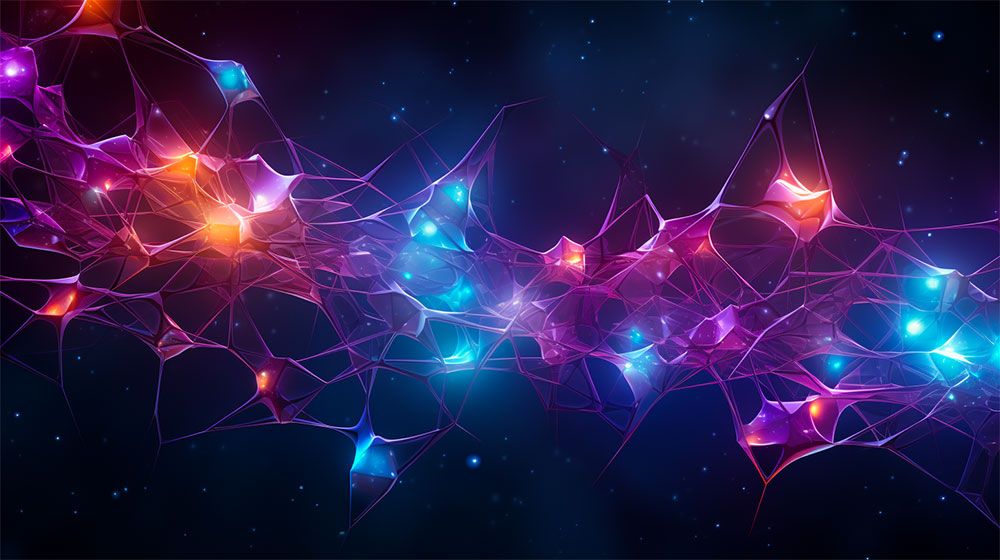
From the meticulous cultivation of organoids to the tantalising possibilities of interconnected networks and even the contemplation of conscious organoids, the canvas of scientific exploration has expanded in ways that ignite our curiosity and challenge our ethical compass.
We find ourselves at the crossroads of innovation and responsibility with each step we take. The emergence of organoid intelligence isn't just a testament to our scientific prowess but a reminder of the immense power that knowledge confers upon us. Our pursuit of understanding isn't confined to sterile laboratories; it resonates across the vast tapestry of human experience, influencing healthcare, technology, ethics, and the very essence of what it means to be human.
In the echoes of these discoveries, we are confronted with choices. How do we harness the potential of organoid intelligence while respecting the moral implications it raises? How do we ensure that our advancements serve the greater good without compromising our values? These questions are not abstract ponderings; they are challenges that beckon us to be both pioneers and stewards, to balance the thrill of progress with the weight of responsibility.
As we move forward, let’s collaborate across disciplines, sparking conversations that transcend laboratories and echo in the corridors of ethics boards, research institutions, and corporate boardrooms alike.
We are not just observers in this dynamic environment; we also contribute to the story that researchers, philosophers, ethicists, and innovators are working to write. The potential of organoid intelligence is as vast as our collective imagination, and our role is to navigate this territory with wisdom, integrity, and an unyielding commitment to the betterment of our world.
Images: Midjourney



